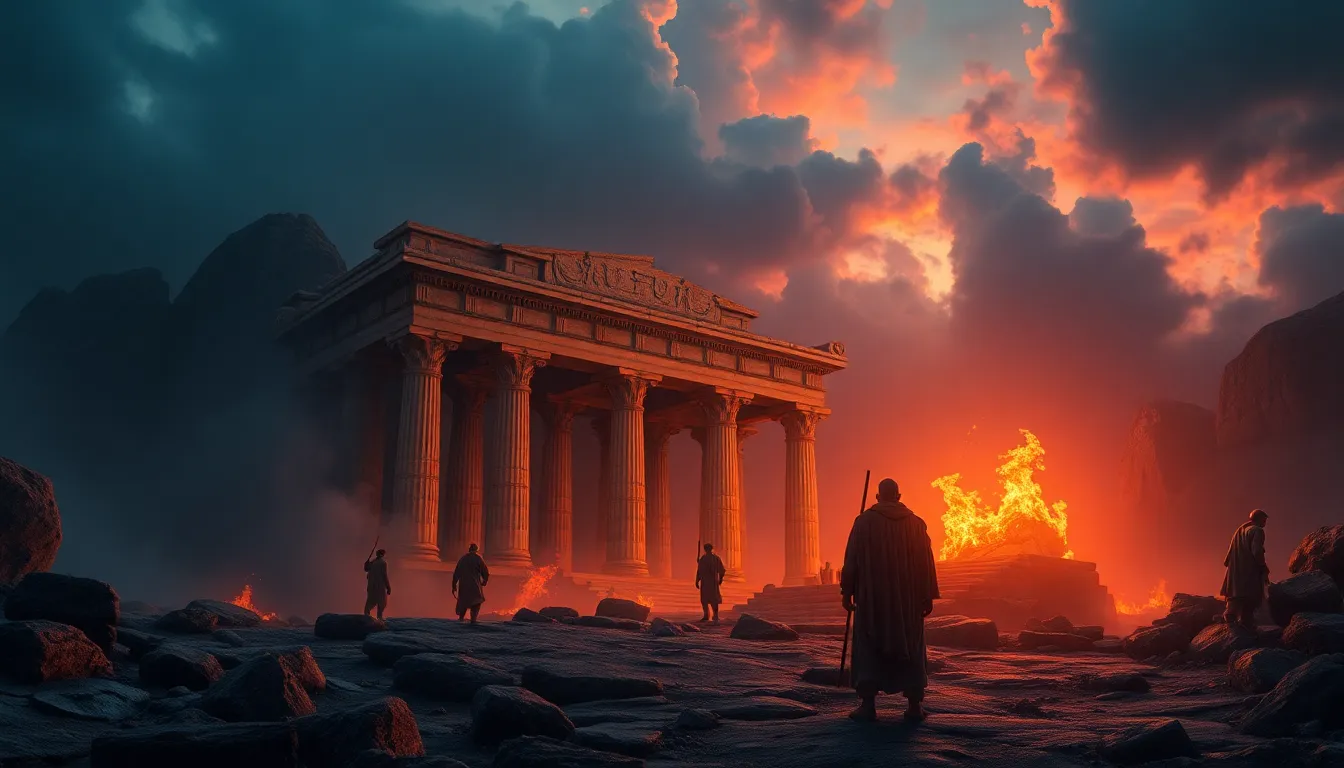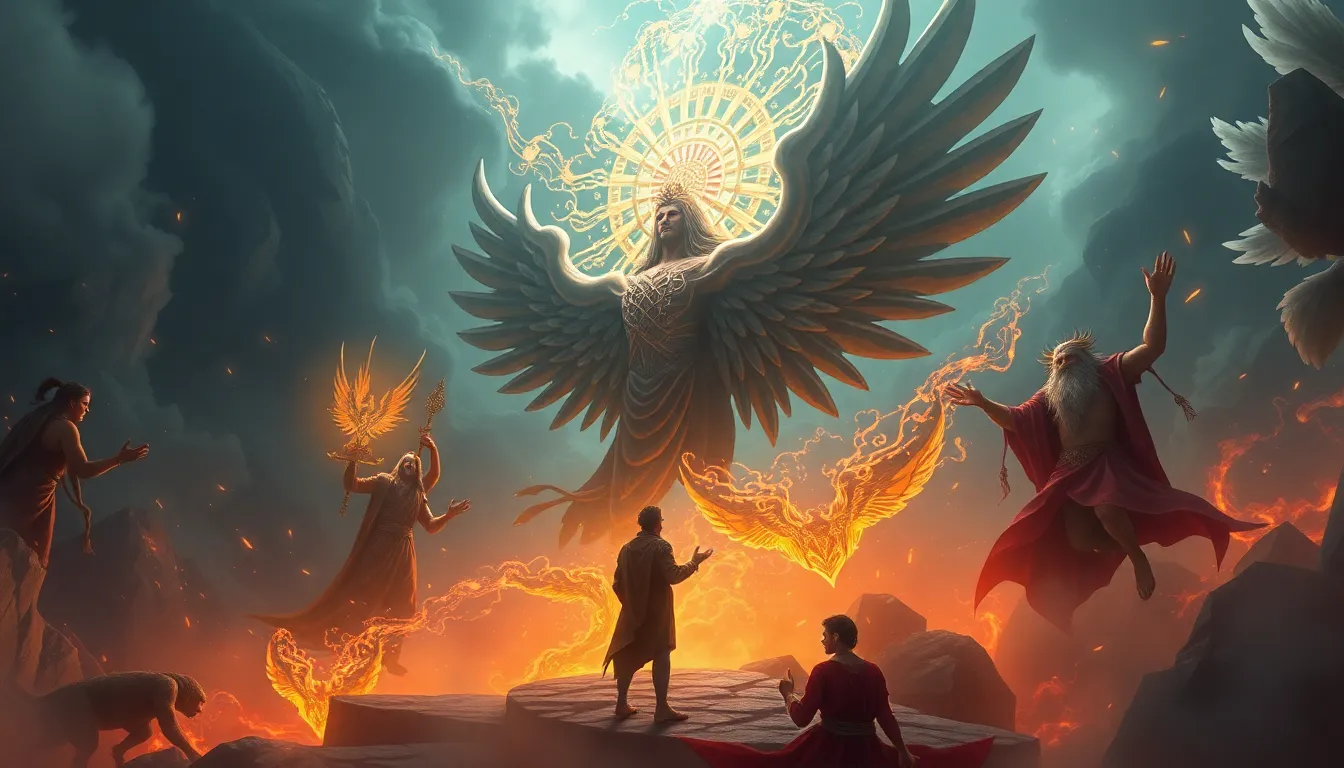Surviving the Gods: Epic Trials That Tested Humanity
I. Introduction
Epic trials in mythology serve as profound narratives that illustrate the struggles and tribulations faced by heroes, often at the hands of divine beings. These trials reflect the human experience, embodying the challenges, moral dilemmas, and aspirations that define our existence.
Throughout history, various cultures have depicted these epic trials, showcasing not only the valor of individuals but also the complex relationship between humanity and the divine. This article delves into notable mythological trials across different cultures, highlighting their significance and the lessons they impart.
II. The Mythological Framework: Understanding the Role of Gods
In many mythologies, gods are portrayed as powerful yet capricious beings who wield control over fate and fortune. Their interactions with humanity often manifest through trials that test the limits of human strength and resolve.
A. The Nature of Divine Beings in Different Mythologies
Divine beings vary significantly across cultures, from all-powerful Olympians in Greek mythology to the wise and often enigmatic figures in Hindu epics. Despite their differences, these gods embody archetypal themes, including:
- Omnipotence
- Vengeance
- Compassion
- Wisdom
B. The Relationship Between Gods and Humanity
The connection between gods and humans is often characterized by a mixture of reverence and fear. Humans strive to gain favor, while gods may challenge them to prove their worthiness. This dynamic is crucial in understanding the trials that unfold in mythological narratives.
C. Common Themes in Divine Trials
Epic trials frequently explore universal themes such as:
- The struggle between good and evil
- The quest for knowledge and enlightenment
- The importance of sacrifice and duty
- The resilience of the human spirit
III. Ancient Greek Trials: The Labors of Heracles
Heracles, known for his immense strength and heroic deeds, is a significant figure in Greek mythology. Born to Zeus and Alcmene, his life is marked by trials that test not only his physical prowess but also his moral character.
A. Overview of Heracles and His Divine Parentage
As the son of Zeus, Heracles possesses divine qualities, yet his life is fraught with challenges, including madness induced by Hera, which leads him to commit heinous acts. To atone for his sins, he undertakes a series of arduous tasks.
B. The Twelve Labors: Significance and Symbolism
The Twelve Labors of Heracles are a set of mythical challenges that include:
- Slaying the Nemean Lion
- Slaying the nine-headed Lernaean Hydra
- Capturing the Golden Hind of Artemis
- Capturing the Erymanthian Boar
- Cleansing the Augean Stables
- Slaying the Stymphalian Birds
- Capturing the Cretan Bull
- Stealing the Mares of Diomedes
- Obtaining the Girdle of Hippolyta
- Obtaining the Cattle of Geryon
- Fetching the Apples of the Hesperides
- Capturing Cerberus, the three-headed dog
These labors symbolize the struggle against seemingly insurmountable odds and reflect the virtues of perseverance, ingenuity, and courage.
C. Lessons Learned from Heracles’ Struggles
Through his trials, Heracles teaches us about redemption, the importance of strength tempered with wisdom, and the idea that true heroism lies not just in physical might, but in moral integrity.
IV. Mesopotamian Epics: The Tale of Gilgamesh
The Epic of Gilgamesh, one of the earliest known literary works, narrates the journey of Gilgamesh, a king who grapples with the existential quest for immortality.
A. Gilgamesh as a Semi-Divine Hero
Gilgamesh is two-thirds divine and one-third human, embodying the strengths and weaknesses of both realms. His adventures reveal the complexities of human nature and the inevitability of mortality.
B. The Quest for Immortality and its Challenges
Following the death of his friend Enkidu, Gilgamesh embarks on a journey to discover the secret of eternal life. However, his encounters with various beings teach him that immortality is reserved for the gods. Key trials along his journey include:
- Defeating the monster Humbaba
- Confronting Utnapishtim, the immortal flood survivor
C. Humanity’s Relationship with Mortality
Ultimately, Gilgamesh learns to accept his mortality, finding meaning in his legacy and the impact he has on his people. The epic illustrates the human condition and the universal fear of death.
V. Norse Mythology: The Trials of Odin
Odin, the Allfather of Norse mythology, represents wisdom, war, and death. His relentless pursuit of knowledge often leads him to sacrifice greatly.
A. Odin’s Quest for Wisdom and Sacrifice
Odin sacrifices his eye at Mimir’s Well to gain profound wisdom, exemplifying the lengths one must go to acquire knowledge. His trials often involve encounters with giants and riddles that test his cunning.
B. The Role of Riddles and Challenges in Norse Lore
Odin’s interactions frequently involve riddles that convey deeper philosophical meanings, reflecting the complexities of existence and morality.
C. The Impact of Odin’s Trials on Human Destiny
Odin’s trials and sacrifices ultimately shape the fate of the gods and humanity, illustrating the interconnectedness of knowledge, power, and sacrifice in determining destiny.
VI. Hindu Epics: The Trials of Rama in the Ramayana
The Ramayana, an ancient Indian epic, follows Rama, an avatar of the god Vishnu, as he faces numerous trials in his quest to rescue his wife Sita.
A. Rama as an Ideal Human and Divine Avatar
Rama embodies the ideal qualities of dharma (duty), righteousness, and honor, making him a model for humanity. His trials test not only his strength but his adherence to duty.
B. The Challenge of Dharma: Duty vs. Desire
Rama’s journey explores the conflict between personal desires and societal duties. His unwavering commitment to dharma teaches valuable lessons about sacrifice and integrity.
C. The Lessons of Loyalty, Honor, and Sacrifice
The Ramayana imparts timeless lessons about loyalty, honor, and the complexities of human relationships, emphasizing the importance of moral principles in the face of adversity.
VII. African Mythology: The Trials of Anansi
Anansi, the trickster god of West African folklore, embodies wit and intelligence, using his cunning to navigate challenges and teach moral lessons.
A. Anansi as the Trickster God
Anansi’s tales often highlight the power of intellect over brute force. His trials involve outsmarting larger, stronger foes, showcasing the value of cleverness.
B. The Role of Wit and Intelligence in Overcoming Adversity
Through his adventures, Anansi demonstrates that intelligence can be a powerful tool in overcoming obstacles, imparting wisdom to those who listen.
C. Cultural Significance of Anansi’s Tales
Anansi’s stories serve as cultural touchstones, reflecting societal values and providing moral guidance through entertaining narratives that resonate


